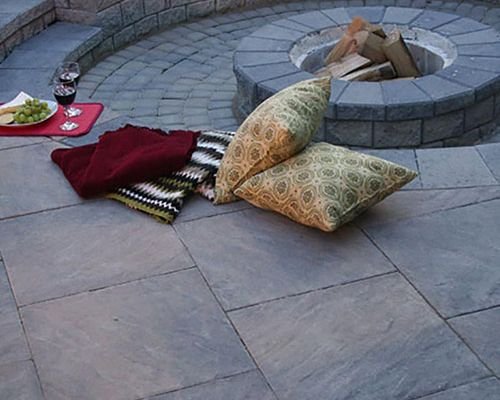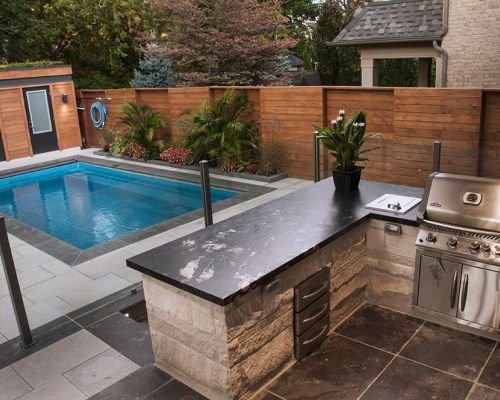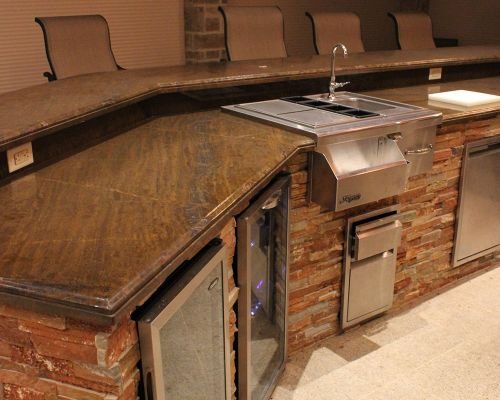
Transforming Toronto yards into inviting outdoor retreats is more than just planting; it’s about achieving harmony between beauty, sustainability, and personal comfort. How can homeowners craft spaces that are visually stunning yet environmentally responsible? This guide reveals the secrets to thoughtful design, emphasizing native plants, eco-friendly materials, and layered layouts that suit Toronto’s climate. Innovative features like lighting, water elements, and durable structures turn ordinary yards into personal sanctuaries, inviting relaxation and social gatherings. Practical strategies, case studies, and future trends demonstrate that outdoor spaces are an ongoing journey of adaptation, innovation, and care. As environmental challenges evolve, so must our landscapes—incorporating smart technology, resilient plants, and sustainable stormwater solutions. Are you ready to transform your yard into a lasting oasis that balances aesthetic appeal with ecological integrity? This comprehensive approach ensures your outdoor retreat remains vibrant, functional, and aligned with the future of sustainable living.
Transform Your Outdoor Space with Toronto Landscape & Design’s Expert Backyard Makeover
Looking to elevate your Toronto property’s outdoor appeal? Toronto Landscape & Design (TLD) offers expert backyard makeover services tailored to your needs. Our award-winning designers consider every detail, from natural stone features and water gardens to irrigation systems and retaining walls, ensuring a stunning and functional landscape. Whether you’re aiming for a serene oasis or a lively entertainment area, TLD’s team transforms visions into reality. Contact us today at 1.416.644.0499 or email mike@torontolandscapedesign.com to start your custom landscape journey.

Transform Toronto Yards into Personal Retreats for Harmony and Sustainability
Transforming Toronto yards into inviting outdoor retreats has become a popular way for homeowners to extend their living space beyond the indoors. In a city where urban life often means limited outdoor space, creating a personal sanctuary right in your backyard offers both comfort and a sense of escape. This process isn’t just about planting a few flowers; it’s about designing a space that balances beauty, function, and sustainability.
A well-made yard can serve many purposes—whether as a peaceful spot to unwind, a lively area for gatherings, or a place to reconnect with nature. Achieving this requires thoughtful planning: selecting plants suited to Toronto’s climate, choosing durable materials, and designing features that blend seamlessly. The goal is to craft a space that feels natural and inviting, encouraging regular use without demanding excessive upkeep.
Understanding what makes a landscape thrive in Toronto’s environment is key. Native plants like coneflowers or serviceberries thrive with minimal intervention, reducing water and chemical needs. Incorporating eco-friendly materials, such as recycled stone or locally sourced wood, not only minimizes environmental impact but also adds character and longevity. These choices support a sustainable approach that benefits both the homeowner and the local ecosystem.
Designing a backyard as an extension of your home involves more than aesthetics. It’s about creating zones—such as seating areas, gardens, or water features—that flow naturally into one another. Proper placement of pathways, lighting, and structures ensures the space is easy to navigate while feeling cohesive. This balance of form and function makes the yard both beautiful and practical for everyday use.
The process begins with assessing the existing landscape—sunlight exposure, soil quality, and structural elements—all influence what’s possible. Developing a tailored plan ensures the transformation aligns with the homeowner’s vision and respects the unique Toronto climate. Clear communication throughout the project helps set expectations, making the journey from concept to completion smoother and more satisfying.
Sustainable practices play a vital role in long-term success. Stormwater management features like rain gardens or permeable paving help handle Toronto’s seasonal storms, reducing runoff and erosion. Native plants and eco-conscious materials further support resilience, keeping the yard vibrant through changing weather patterns and ensuring ongoing low-maintenance beauty.
Transforming a yard into a stunning outdoor retreat is more than a one-time project; it’s an ongoing journey of care, adaptation, and innovation. By focusing on harmony between aesthetics and sustainability, homeowners can create spaces that not only look great but also support a healthier environment. This approach fosters personal enjoyment and contributes positively to the broader community, turning outdoor spaces into lasting sources of relaxation and inspiration.
Core Principles That Shape Stunning, Eco-Friendly Landscapes
Creating an outdoor space that is both beautiful and sustainable starts with understanding some core landscape design principles. These principles serve as the foundation for transforming any yard into a functional, inviting, and eco-friendly retreat. Balance is essential—ensuring that visual appeal and usability complement each other seamlessly. A well-designed yard feels inviting and practical, encouraging daily use without sacrificing aesthetic quality.
Native plants and eco-friendly materials are key components in this approach. They thrive naturally within Toronto’s climate, requiring less water, fertilizers, and pesticides. Using locally sourced or recycled materials for pathways, furnishings, and structures not only reduces environmental impact but also adds character and durability to the landscape. These choices support the local ecosystem and make ongoing maintenance more manageable.
Layering adds depth and visual interest by combining different heights, textures, and colors. Tall trees provide shade and privacy, while shrubs and ground covers create lush layers that define different zones. This approach makes the yard feel more dynamic and inviting, helping to establish distinct areas for lounging, dining, or gardening. Proper layering also helps the landscape blend into its environment, creating a natural, cohesive look that feels intentional and well thought out.
Thoughtful spatial planning guides the layout of pathways, seating areas, and activity zones. Clear pathways improve flow and accessibility, while designated zones help organize the space for specific uses. Incorporating multifunctional features, like a patio that doubles as a garden, maximizes versatility while maintaining aesthetic harmony. This careful planning ensures the yard remains uncluttered, easy to navigate, and tailored to the homeowner’s lifestyle.
Designing with future adaptability in mind is equally important. Selecting durable materials and flexible structures allows the landscape to evolve with changing needs. Whether adding a play area or expanding seating, a flexible design accommodates lifestyle shifts while maintaining its visual appeal. This forward-thinking approach helps ensure the landscape remains resilient and relevant over time.
Incorporating stormwater management features like rain gardens and permeable paving plays a crucial role in sustainable landscape design. These elements naturally handle runoff, reduce strain on water systems, and add visual interest. They help your yard withstand extreme weather, making it more resilient and environmentally responsible. By applying these core principles—balance, native plants, layering, thoughtful planning, future-proofing, and climate awareness—you create landscapes that are both stunning and enduring. These ideas guide professionals in crafting yards that stand the test of time, offering beauty, functionality, and sustainability for years to come.

Innovative Features to Elevate Your Outdoor Sanctuary
Creating an outdoor retreat isn’t just about plants and paving; it’s about adding those special touches that elevate a yard from ordinary to inviting. Thoughtful lighting plays a key role in setting the mood once the sun goes down. Strategic placement of fixtures highlights focal points like water features or cozy seating areas, transforming your backyard into a warm, welcoming space. String lights and lanterns can bring a subtle magic, making evenings feel enchanting and intimate.
Water features are another powerful element that can redefine your landscape. A simple fountain or a small pond introduces soothing sounds and visual interest, turning your yard into a sanctuary of calm. These features serve as natural focal points, encouraging relaxation and contemplation. When well-integrated, they also help mask city noise or street activity, creating a peaceful oasis right in your own backyard.
Outdoor structures such as pergolas, fire pits, and built-in seating aren’t just decorative—they shape how you interact with the space. A pergola can define a dining or lounging zone while providing shade and support for climbing plants. Fire pits invite gatherings and extend usability into cooler months, fostering connection and comfort. Built-in seating maximizes space and adds a seamless, inviting look that encourages lingering and conversation. These elements add function without sacrificing style.
Eco-friendly materials further enhance these features. Reclaimed wood, recycled stone, and sustainable options lend character and durability, while supporting environmental responsibility. Surrounding water features and structures with native or drought-tolerant plants boosts resilience and reduces ongoing maintenance needs. When these elements work in harmony, they create a landscape that is both visually stunning and environmentally conscious.
Designing with purpose ensures these features complement each other naturally. Thoughtful placement and cohesive styling create layered environments that appeal to the senses. Well-chosen lighting accentuates textures, water features add tranquility, and structures provide comfort—all working together to craft a space that feels curated and personal. This harmony transforms a backyard into a true outdoor retreat.
Incorporating these creative touches also encourages more outdoor living. They invite relaxation, entertainment, and connection with nature, making your yard an extension of your home’s comfort. When designed thoughtfully, these features not only beautify your space but also enhance its functionality and sustainability over time, turning your outdoor area into a lasting personal sanctuary.
To further enhance your outdoor sanctuary, consider exploring innovative ways to incorporate sustainable features that complement your existing design. For example, integrating eco-friendly materials and practices can make your landscape more resilient and environmentally responsible. You can learn more about sustainable landscaping solutions at sustainable landscaping, which offers ideas and resources to help turn your outdoor space into an even more harmonious retreat.
Practical Steps and Inspiring Case Studies for Yard Transformations
Transforming a yard into a beautiful outdoor retreat in Toronto begins with a clear assessment of the existing space. Homeowners and landscapers need to evaluate sunlight exposure, soil quality, and structural features like trees or hardscapes. Taking accurate measurements and noting areas that need improvement helps develop a realistic design plan tailored to Toronto’s unique climate. This initial step lays a strong foundation, making the subsequent work more precise and efficient.
Once the assessment is complete, creating a detailed, customized design becomes the next priority. This involves translating ideas into specific features, such as cozy seating areas, lush garden beds, or inviting dining zones. Prioritizing native plants like coneflowers or serviceberries reduces maintenance and supports local ecosystems. Incorporating practical elements like pathways, lighting, and designated activity zones helps organize the space, ensuring it remains inviting and functional without feeling cluttered.
Choosing eco-friendly materials and native plants extends beyond aesthetics. Using recycled stone or reclaimed wood for pathways and structures minimizes environmental impact while adding character and durability. Native plants thrive naturally, requiring less water and fertilizers, which supports sustainability and reduces long-term upkeep costs. These choices create a resilient landscape capable of withstanding Toronto’s seasonal shifts, maintaining its vibrancy and low-maintenance appeal over time.
Real-world examples demonstrate the effectiveness of these principles. For instance, transforming a small backyard into a cozy outdoor living space involved careful site assessment, layered planting, and the addition of permeable stone patios. Native plants like wild ginger and serviceberries grew effortlessly, while subtle lighting and a water feature turned the space into a peaceful retreat. Such projects highlight how thoughtful planning, native plant selection, and sustainable materials can produce a yard that’s both beautiful and environmentally responsible.
Throughout the process, maintaining open communication with homeowners is essential. Regular updates and clear explanations about material choices and installation steps help align expectations and foster a sense of ownership. Post-installation, ongoing care—such as watering native plants and inspecting features—ensures the yard stays lush and functional. A well-executed transformation isn’t just a one-time change; it’s the start of a lasting outdoor space designed to grow, adapt, and thrive alongside its owners.

Looking Ahead: Embracing Innovation and Sustainability in Outdoor Design
Creating a stunning outdoor retreat in Toronto isn’t just a one-time project; it’s an ongoing journey of care, innovation, and adaptation. The foundational principles of balance, native planting, layered design, and sustainable practices set the stage, but true success comes from continuously nurturing and refining the space. As climate patterns shift and new materials and technologies emerge, staying informed and open to change ensures your yard remains vibrant, resilient, and aligned with your lifestyle.
Innovation plays a crucial role in elevating outdoor spaces beyond traditional boundaries. Smart irrigation systems, energy-efficient lighting, and modular features make outdoor living more convenient and eco-friendly. Integrating these advancements not only enhances comfort but also demonstrates a commitment to sustainability. As these technologies become more accessible, they help maintain the beauty and functionality of your yard with less effort over time.
Looking ahead, the focus should be on exploring new materials, design trends, and ecological practices that push boundaries while respecting the environment. Native plants will continue to be central, but future innovations might include drought-tolerant species or edible landscapes that combine visual appeal with practicality. Stormwater management solutions like permeable paving and rain gardens will further support resilient, eco-conscious yards, helping them withstand Toronto’s changing climate.
Fostering a deeper connection to nature and community adds another layer of value. Well-designed landscapes can become shared spaces that support local ecosystems and encourage social interaction. By prioritizing ongoing learning and adaptation, homeowners and landscapers can turn yards into contributions to a healthier, more sustainable city. These spaces become more than private sanctuaries—they evolve into community assets that promote environmental awareness and social cohesion.
Designing a beautiful, sustainable yard is not a static goal but a dynamic process. Each season offers opportunities to experiment, improve, and deepen your relationship with outdoor living. Embracing new ideas and technologies keeps your landscape fresh, functional, and aligned with evolving environmental standards. This mindset transforms a yard from a static feature into a living, breathing extension of your home and values.
The true power of a well-crafted outdoor retreat lies in its ability to adapt and flourish over time. It’s about creating a space that not only looks great today but also continues to thrive amid changing conditions. By combining thoughtful design, ongoing maintenance, and a willingness to innovate, you ensure your yard remains a source of inspiration and relaxation for years to come.
Every effort to improve and innovate in landscape design contributes to a broader movement—one that emphasizes environmental responsibility, resilience, and community well-being. When each project is approached with this mindset, outdoor spaces become more than personal escapes; they become vital parts of a sustainable, thriving urban environment.
In the end, transforming outdoor spaces in Toronto is about more than aesthetics. It’s about creating a legacy of thoughtful, resilient design that adapts, evolves, and sustains. By embracing continuous improvement and innovation, your yard can become a lasting symbol of harmony between beauty, functionality, and responsibility—an inviting retreat that nurtures both your well-being and the health of the planet.



